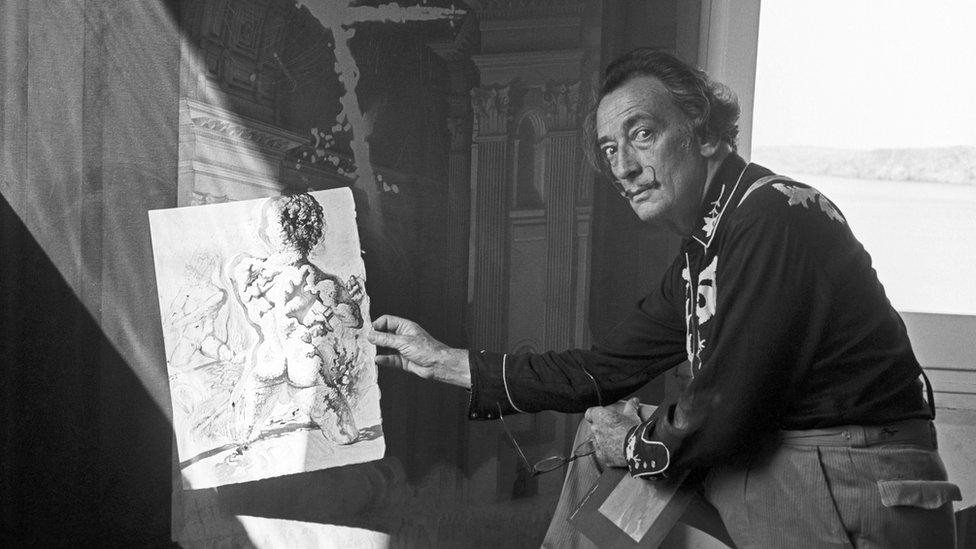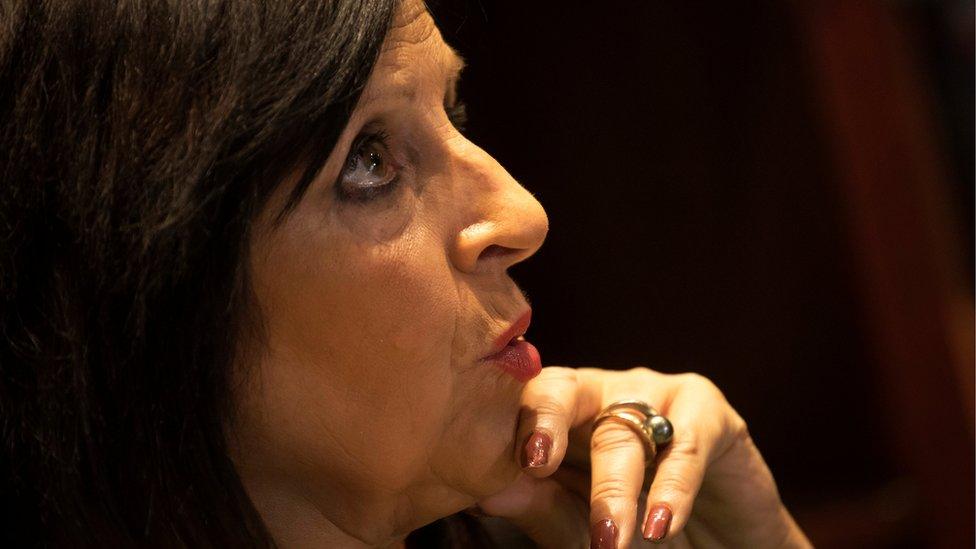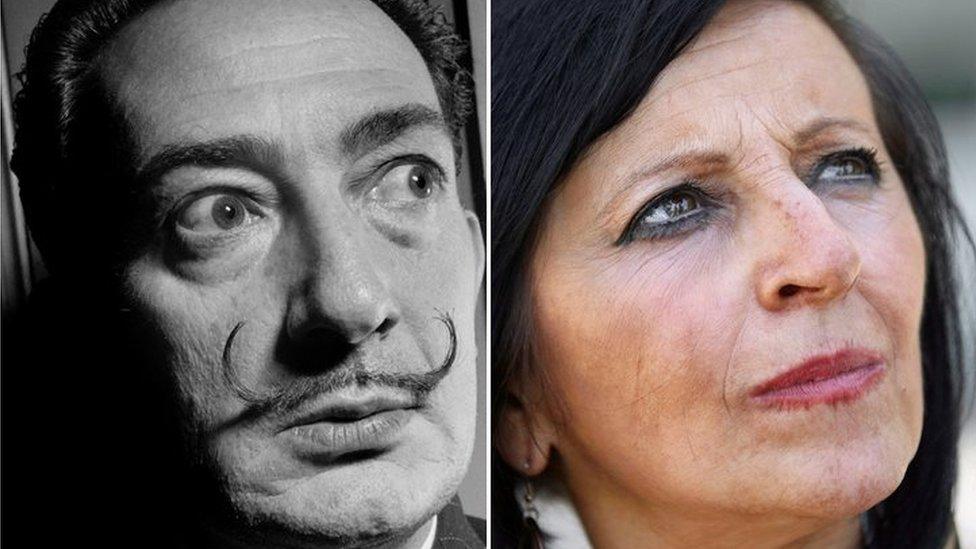Dali’s last great (posthumous) artwork
- Published

This whole Dali exhumation business is weird. It's right up there with any of his surreal artworks for its sense of the macabre and otherness. Nothing about this story is straightforward.
Let's start with where he is buried. Having died in 1989 and then been embalmed by Narcis Bardalet (who said he thought Dali would have found this whole affair hilarious), he was buried under the stage of his Theatre Museum in Figueres, north east Spain.
A crypt was created that the public can visit where they can see a large memorial stone marking his burial place. But that was not the point of entry for Thursday night's exhumation. That was upstairs in the huge geodesic domed hall that was once the old theatre's main stage.
Bang in the middle of the space, embedded in the floor, is a massive one-and-a-half tonne, unmarked stone slab, which thousands of people once walked over every day without any idea that they were treading on the great surrealist's grave.

Dali's tomb (centre of the image) in the Theatre Museum in Figueres
Now, though, they will know - as it has become famous for being the place where the forensic scientists accessed the artist's remains.
Security was tight. The media was banned. Only those who absolutely needed to be there (lawyers, Dali Foundation representatives, the forensic team, etc) were granted a place to watch the proceedings, which took place in a hastily-erected tent to stop any enterprising individuals from flying a drone above the glass dome and taking pictures.
The forensic operation took four hours and was followed by a press conference, where we learned the exhumation was much more straightforward than anticipated.
Dali's mummified body was in almost perfect condition, enabling samples of his hair, nail and bones to be taken. Narcis Bardalet was present and said it was a miracle the artist's moustache was still pointing at ten to two, like a clock.

María Pilar Abel Martínez, who claims Dali is her father
The Dali Foundation is not at all happy, although it does admit the extra attention has been a welcome magnet for tourists. The foundation can't understand why the judge approved the exhumation before all other avenues had been fully explored.
It points specifically to the DNA of María Pilar Abel Martínez, the Tarot card-reading woman who is making the claim that Dali is her dad.
Why, it asks, hasn't her DNA been compared with her brother's - whose father is known, and is not Salvador Dali. Maybe it has - we don't know. But one can only assume her representations had sufficient credibility to persuade a judge to sanction the exhumation.
The evidence is circumstantial. She says her mother met the famous artist in the mid-1950s when she was working in Cadaques, a small fishing port near Figueres where Dali and his wife Gala had created a surrealist's dream home out of a row of old cottages.
Her mother and Dali had a "clandestine affair" she says, leading to her mother becoming pregnant and subsequently giving birth to her in 1956.
'Highly-prized estate'
Experienced Dali watchers are sceptical. Not least because he was well known for being more of a watcher than a doer when it came to sex.
The orgies he and Gala are said to have hosted at their seaside home were likely a visual treat for him, and a physical pleasure for her. That's how the story goes, anyway.
But should the DNA sample taken from his dead body prove that he is indeed the father of Ms Martínez, a revision to the accepted stance on Dali's voyeuristic nature will be needed. As will a reapportioning of his highly-prized estate, which contains paintings, buildings, sculptures and use of the lucrative Dali trading licence.
It is estimated the value of his estate, which he gave to the Spanish state and the Salvador and Gala Dali Foundation, is around £300 million, a quarter of which Ms Martínez would be entitled to under Spanish law. That would pay a legal bill or two, as well as being a bizarre end to a bizarre story that has Salvador Dali written all over it.
We'll have to wait until the middle of September to find out the results, as the court case won't resume until then.

Follow us on Facebook, external, on Twitter @BBCNewsEnts, external, or on Instagram at bbcnewsents, external. Follow my Twitter feed: @WillGompertzBBC, external If you have a story suggestion email entertainment.news@bbc.co.uk, external.
- Published21 July 2017

- Published20 July 2017
